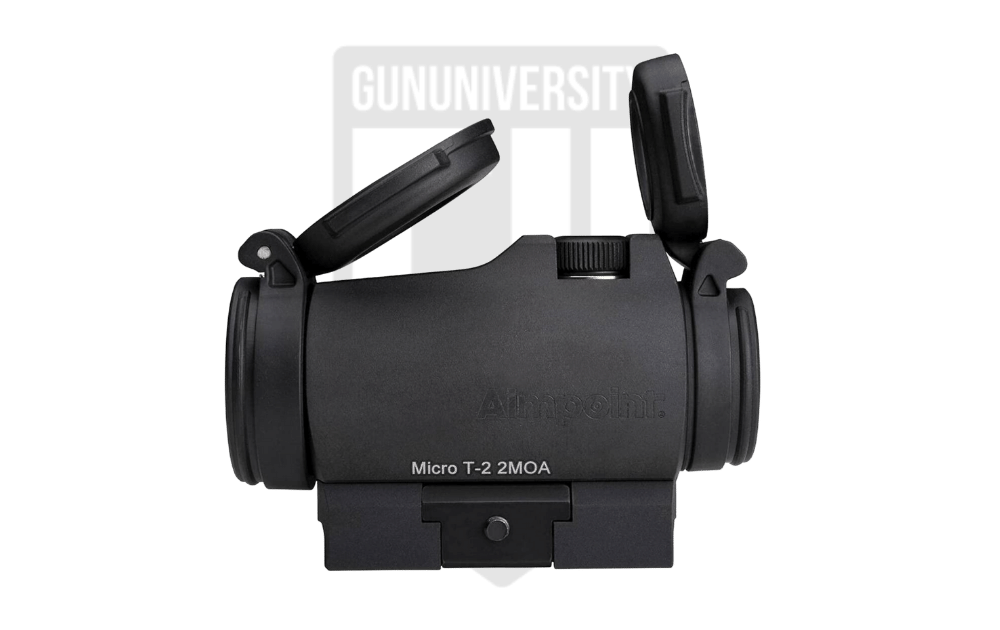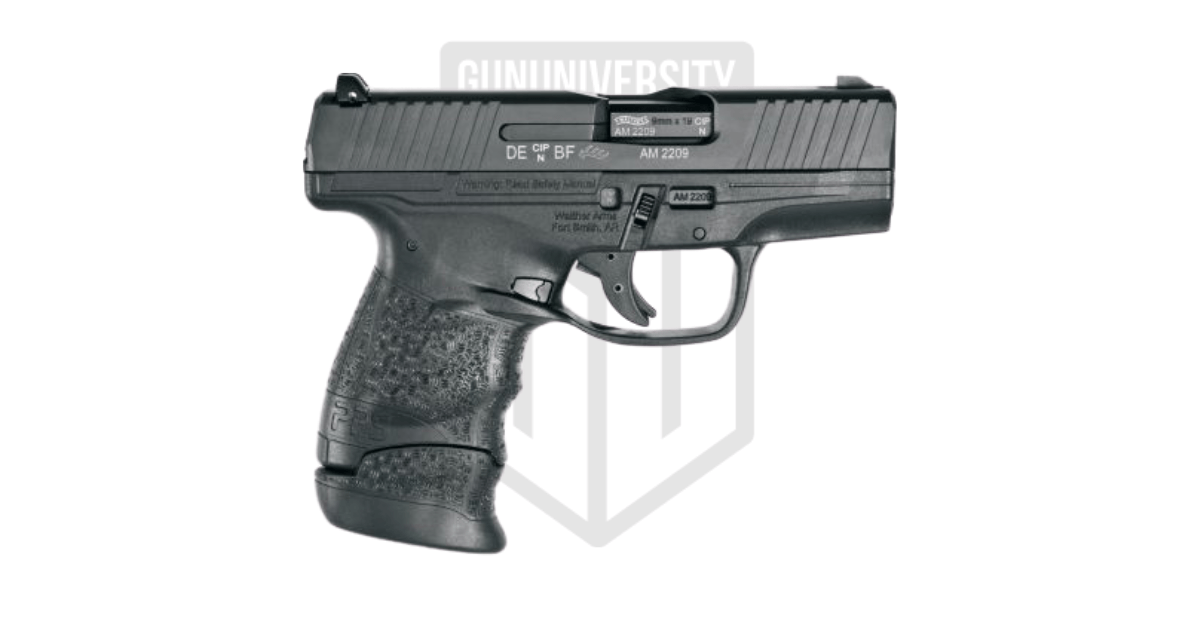Best PCC Optics: Compact Short to Mid Range Optics
Pistol-caliber carbines remain a very popular option for a wide variety of gun owners. This includes new gun owners, experienced gun owners, home defenders, competitors, and more. Like most guns, they benefit greatly from the addition of an optic. Which optic? Well, all the optics! I wish! With that said, we’ve gathered seven of the best PCC optics across a diverse field of optic types, budgets, and beyond.
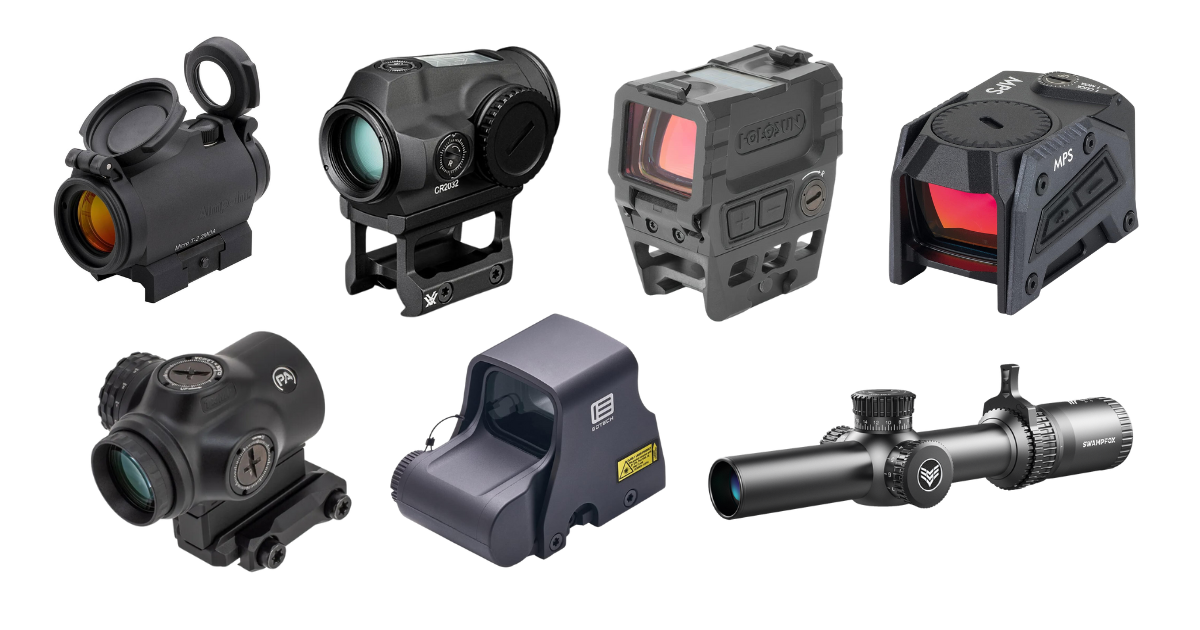
Optical Types and PCCs
Pistol caliber carbines are stuck with pistol calibers. This means they aren’t long-range weapons by any means. They tend to be soft shooting, fun to shoot, easy to suppress, and affordable, but they don’t offer long-range capability. This tends to pigeonhole them into three optic types: red dots, prisms, and even low powered variable optics. With that said, let’s look at three common optics types and how they relate to pistol caliber carbines.
Reflex
Reflex sights are broken down into two categories: red dots and holographic sights. While they differ in design, they deliver the same result—simple, non-magnified 1X aiming with unlimited eye relief. They’re easily the most common option for pistol-caliber carbines, and I get why. Just put the dot on the target and fire; it’s that simple. You can push a red dot to 100 yards if you know what you’re doing, depending on target size and most handgun rounds. Reflex sights also work great with accessories like magnifiers or night vision, and they tend to be the most affordable choice.
Prisms
Prism optics aren’t unheard of in the pistol-caliber carbine world. These fixed magnification sights range from 1X to 5X and feature etched reticles that don’t rely on batteries—though they’re usually illuminated anyway. Sure, they’re heavier and pricier than red dots, and using them in bright light can be tricky. However, prism scopes also offer significant advantages, particularly for individuals with astigmatism. They are etched, so they don’t blur or fail. I appreciate that the reticle stays crisp and clear no matter what. Plus, you get more complex reticles with options like chevrons and BDC marks, even if most handgun rounds won’t need those for serious distance work.
LPVOs
Low-power variable optics can be a decent choice for a PCC. They’re not really ideal for something like a 9mm but make sense for 10mm or Magnum rounds. I like having a 1-4X LPVO for the versatility; it gives you 1X speed but lets you dial up for more precision on further shots. Still, I wouldn’t break the bank on an LPVO for a PCC. Most handgun rounds don’t call for high-end glass, and you can get solid performance from an affordable option. No need for top-tier clarity if you’re not stretching out to 500 yards.
How I Chose the Best PCC Optics
With over two decades of experience in the shooting world, I’ve had the chance to test and review a wide range of optics, including PCC (Pistol Caliber Carbine) optics. This time around, my goal was to find the best PCC optics out there. I focused on factors like clarity, ease of use, durability, and overall performance. To put together this list, I considered not only my own experiences with optics but also gathered input from fellow shooters and industry pros. After all, a diverse perspective is always valuable.
During testing, I took these optics beyond the range to evaluate how they performed in real-world conditions. I then categorized each optic based on its unique strengths, ensuring there’s something for every shooter’s needs. Choosing the right optic for your PCC is a personal decision, so here’s my advice: read through the review, try different models, and find the one that feels like the perfect fit for you.
Gun University’s Best PCC Optics
Best PCC Optics
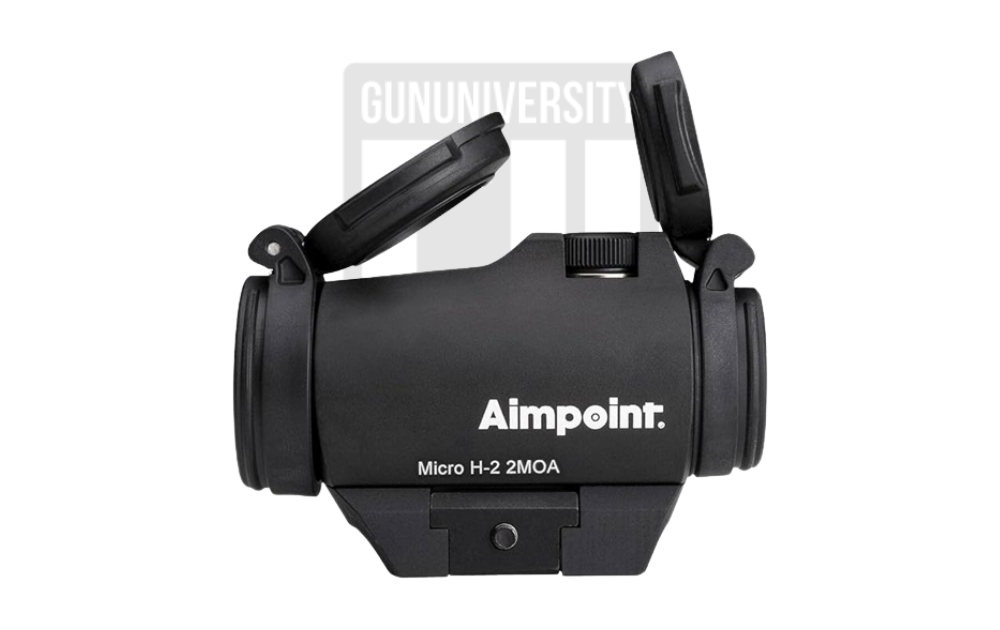 |
| Buy on Amazon | |
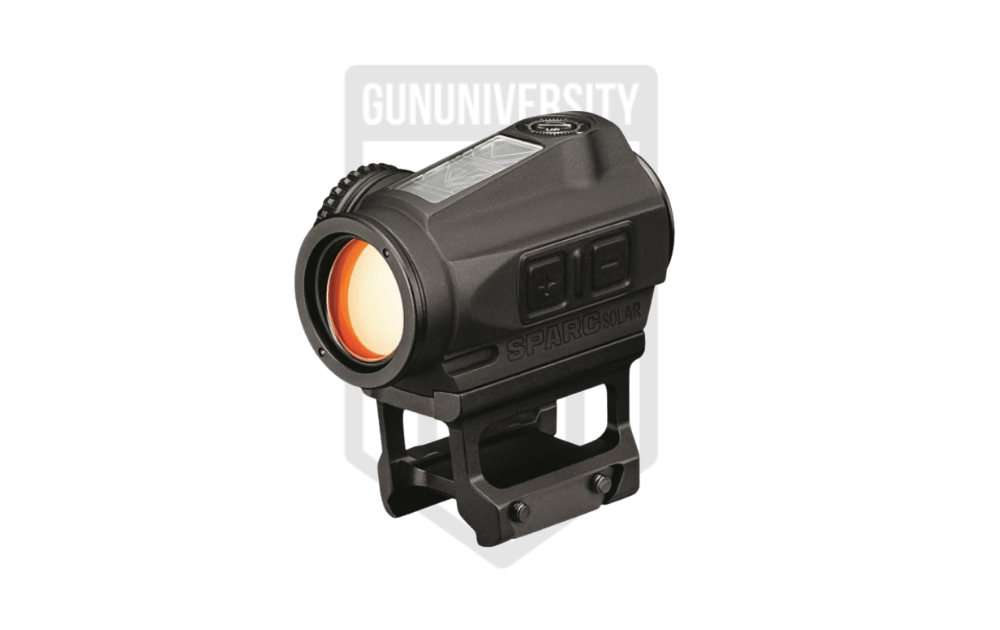 |
| Buy on Amazon | |
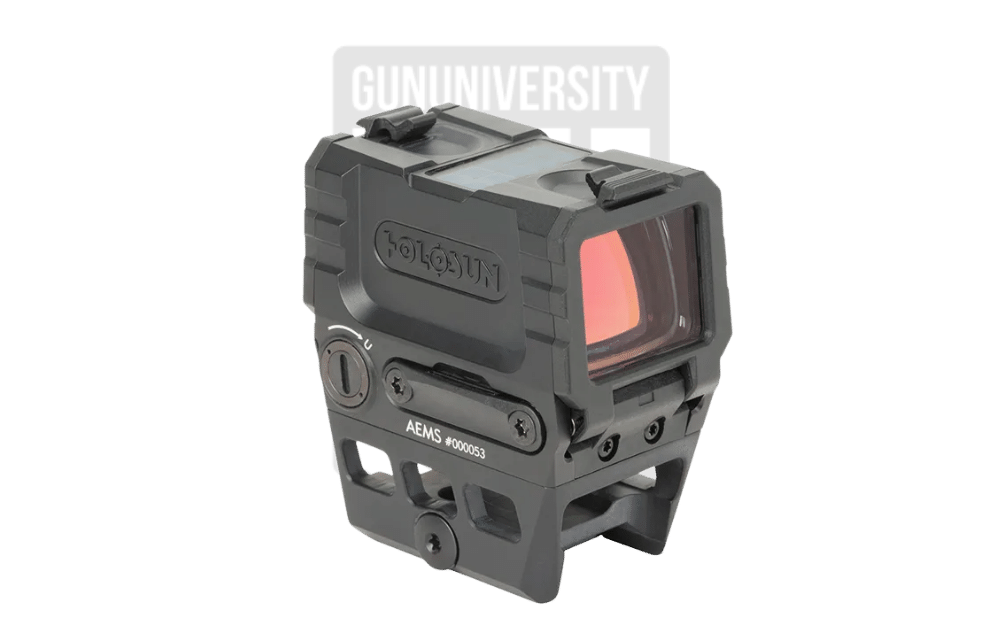 |
| Buy on Amazon | |
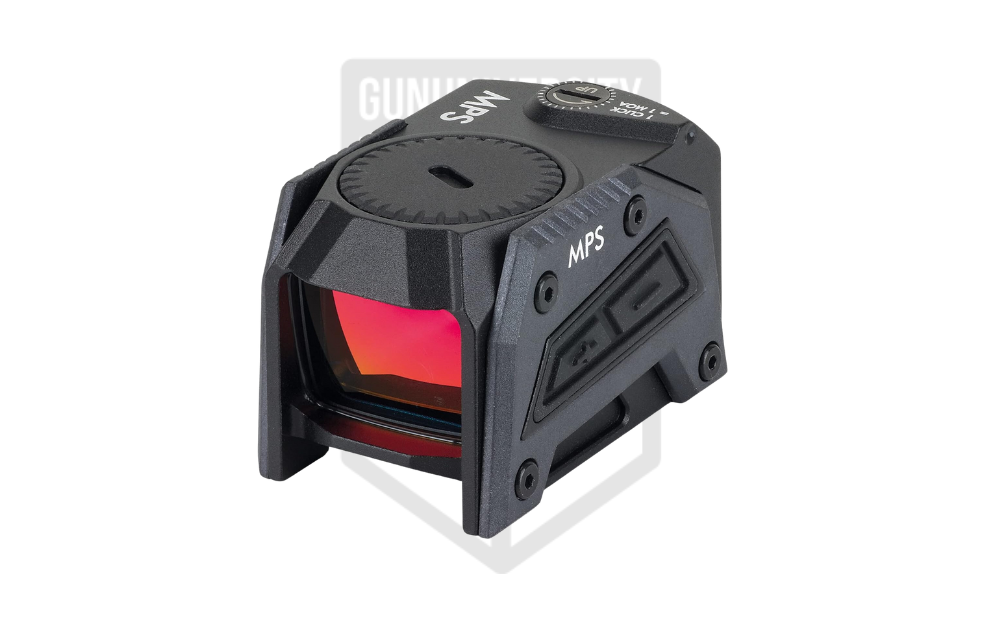 |
| Buy on Amazon | |
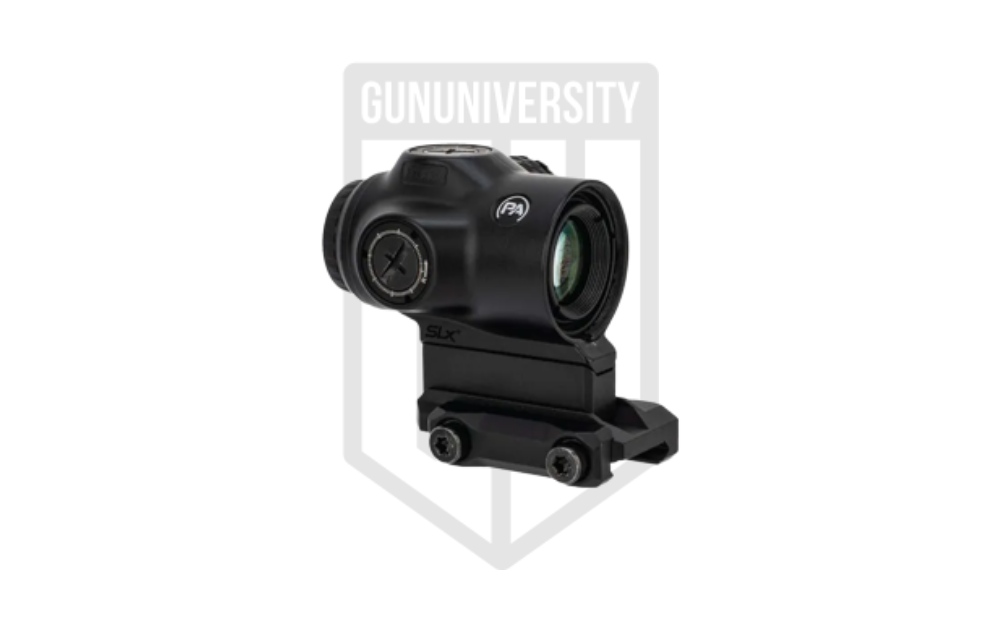 |
| See Price | |
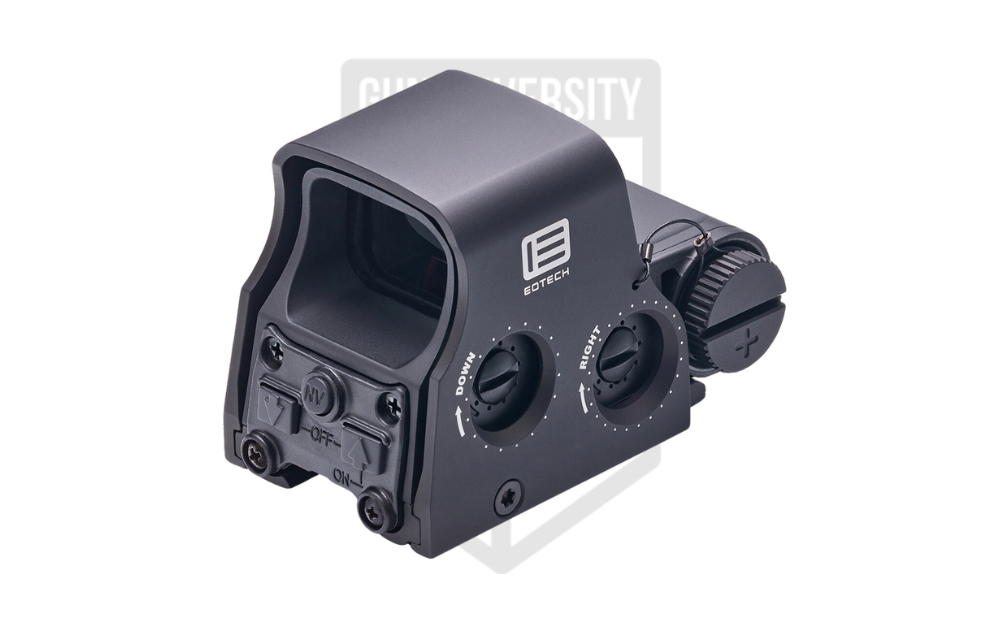 |
| Buy on Amazon | |
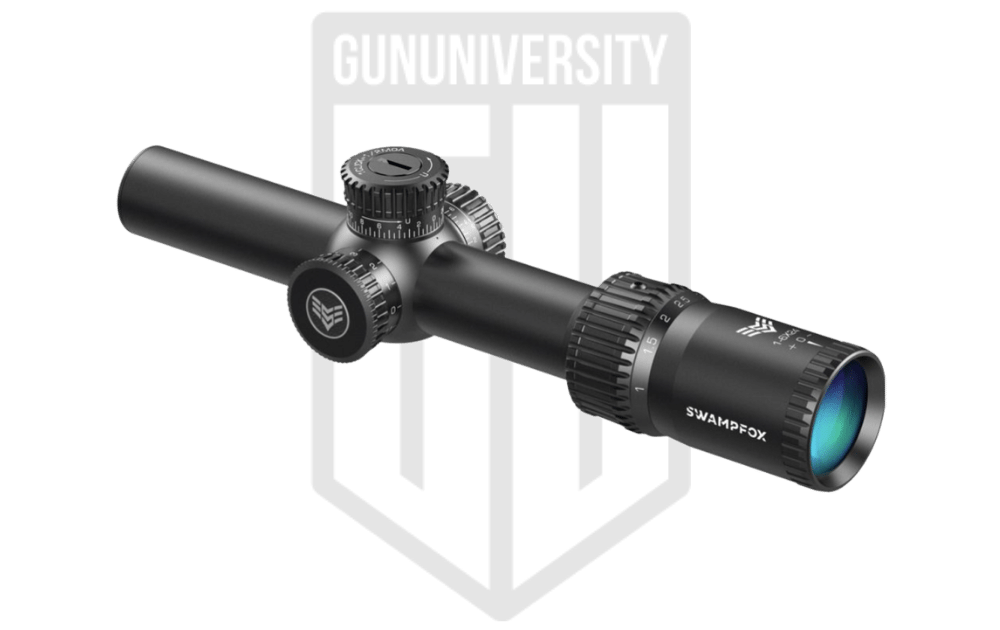 |
| Buy on Amazon |
Spec Comparison of the Best PCC Optics
Below is a table of the specifications for the best optics for your pistol caliber carbine:
| Optic | Sight Type | Reticle | Weight (oz) | Length (in) |
|---|---|---|---|---|
| Red Dot | 2 MOA Dot | 6.7 | 2.7 | |
| Red Dot | 2 MOA Dot | 5.9 | 2.6 | |
| Red Dot | 2 MOA dot or 65 MOA Circle and Dot | 5.5 | 2.2 | |
| Red Dot | 3.3 MOA Dot | 2.05 | 2.17 | |
| Primary Arms SLx 1X | Prism | ACSS Gemini 9mm | 7 | 2.48 |
| Holographic | Circle and Dot | 9 | 3.8 | |
| LPVO | Guerrila Cross MOA | 17.5 | 9.79 |
Best PCC Optics
Here is our list for the best PCC optics:
- Best red dot: Aimpoint T-2
- Best budget red dot: Vortex SPARC Solar
- Best solar red dot: Holosun AEMS
- Best micro red dot: Steiner MPS
- Best prism sight: Primary Arms SLx 1X
- Best holographic sight: EOTech XPS3
- Best LPVO: Swampfox Tomahawk 1-4X
Best PCC Optics – Reviews
1 AIMPOINT T2 : Best red dot
- Clarity A
- Shootability A-
- Reliability A-
- Features B+
Our Grade
A-
Reader’s Grade
A+
Based on 2 Reviews
Your Grade
Do You Own This Accessory? Leave A Review
Success Your Grade Has Been
Added To Our Reader’s Score
We use email to verify the accuracy of our reviews. We promise to never spam you.
Aimpoint T-2 Specs
- Sight Type Red Dot
- Reticle 2 MOA Dot
- Weight 6.7 oz
- Length 2.7 in
Aimpoint T-2 Review
I don’t think we have an optic that is more proven than the Aimpoint T-2, except maybe the T-1. The Aimpoint series has severed dozens of military forces, including some of America’s most elite fighting forces. It’s rugged, well-made, super clear, and designed to last forever. The Swedish know how to construct an optic! I love the T-2 series, and if you need a solid little optic for a pistol-caliber carbine, then the T-2 is tough to beat.
The Aimpoint T-2 provides a very lightweight and small platform that works perfectly with a compact pistol caliber carbine. If you’re using a subgun or SBR, then you are likely aiming to keep your weapon lightweight, and something like the T-2 is perfect for that role. The T-2’s durability and design make it duty-ready, and if you want an optical option for self-defense, then it’s tough not to suggest the T-2.
The 50,000-hour battery life is a huge hit, which equals years and years of battery life. This optic has numerous brightness settings, and it can get bright enough to see in the brightest conditions but also dim enough to use with night vision technology. The glass is also super clear and works brilliantly with a magnifier in case you want to extend your optical capability with your pistol-caliber carbine.
The T2 is popular enough to have a massive aftermarket. PCCs are a very diverse group of guns, and with that in mind, different height mounts can be important. The T2 offers tons of mounting options for whatever weapon you have.
I’m gushing over this optic, and as you’d imagine, it’s a premium choice option. With that in mind, it comes with a premium price point, and if your PCC is for plinking, fun, or competition, then it might be priced a bit too high for that purpose. If you need duty-ready, then the T-2 provides a great balance of size, durability, and excellent design.
Aimpoint T-2 Pros and Cons
- Extremely well made
- Long battery life
- Professional grade optic
- Expensive
2 Vortex SPARC Solar Red Dot : Best budget red dot
Vortex SPARC Solar Specs
- Sight Type Red Dot
- Reticle 2 MOA Dot
- Weight 5.9 oz
- Length 2.6 in
Vortex SPARC Solar Review
If the Aimpoint T2 is a bit too expensive for you, then the Vortex SPARC Solar might be the best alternative at a lower price. As the name implies, the optic has a solar panel and battery design. The optic will stop using the battery and swap to solar when there is enough power generated to do so. This extends battery life up to 150,000 hours. It’s an impressive battery life for a fairly budget-minded optic.
The SPARC Solar comes with both a high and low mount, which makes it easy to mate with most PCCs. Additionally, the SPARC Solar uses the same footprint as the T2, making it easy to find a variety of different mounts. Price-wise, the SPARC Solar is only about 200 bucks. It’s not as proven as the Aimpoint and isn’t crafted by the Swedes. It’s imported from China, but is still quite rugged and well-made.
The SPARC Solar provides a nice clear view that betrays the budget price. While the dot isn’t as crisp or as nice as the Aimpoint, it’s clear enough to be precise and accurate. The dot is a little star-like at lower brightness levels and does get better at higher levels. Speaking of, the brightness levels proved to be more than sufficient in my experience during high noon in Florida.
The buttons are recessed and take a dedicated press to push. While it might feel annoying, it serves the purpose of preventing easy accidental presses. The battery compartment juts outward and does create a bit of annoyance in my field of view. Will it block my FOV so badly that I could lose a threat? No, but it can mildly annoy me.
The SPARC Solar is one of the better put-together budget optics. It’s not just a rehash or another, more expensive optic, but a solid and reliable option for a pistol caliber carbine. It’s got plenty of excellent features, and for most users, it’s more than enough optic.
Vortex SPARC Solar Pros and Cons
- Button controls
- Bright reticle
- Solar panel backup
- Big battery compartment
3 Holosun AEMS : Best solar red dot
Holosun AEMS Specs
- Sight Type Red Dot
- Reticle 2 MOA dot or 65 MOA circle with dot
- Weight 5.5 oz
- Length 2.2 in
Holosun AEMS Review
The Holosun AEMS was quite a surprise. It marked a turning point for Holosun in many ways. Holosun went from being a budget optics company that more or less cloned other optics to a company that produced its own original optics. They even ditched the numerical model numbering system and used acronyms like AEMS to designate their optics. The AEMS is a compact, long gun optic.
It’s a big square, and the benefit of that square design is a larger window without creating a greater overall footprint. The optic is highly efficient in its window size versus its overall size. Those windows are also protected by removable see-through lens caps. I love how clear the view is through the optic, and that extends to the reticles.
They are quite crisp and clear. On my Aero Precision EPC, the AEMS rules. I prefer the 65 MOA circle and dot combination. The wider reticle is easier to find for close-range shooting and helps me deliver solid hits to targets, both big and small, especially when I’m on the clock. I find it to be the more intuitive reticle for fast shooting.
To keep battery life long, the optic has both a very aggressive shake wake system and a solar panel for a little extra juice generated by the sun. The side-mounted battery is easy to swap, and you can even program the sleep mode to be less or more aggressive. It does spring back to life as soon as it senses movement, so I prefer a lower setting.
The AEMS is short and light, making it well-suited for a variety of different types of PCCs and sub guns. The main problem for me is the proprietary mount footprint. This requires you to use a special mount, and you don’t get to be as picky with your mount selection. Both low and high mounts exist, but they aren’t as common as something like the T2.
The AEMs is a mid-priced red-dot option that provides a lot of very nice modern features. If you don’t mind being a square, then the AEMS might be for you.
Holosun AEMS Pros and Cons
- Solar panel
- Multiple reticles to pick from
- Proprietary mount
4 Steiner MPS : Best micro red dot
Steiner MPS
The Steiner MPS MOA dot is super crisp, bright, and easy to see in all environments.
Steiner MPS Specs
- Sight Type Red Dot
- Reticle 3.3 MOA dot
- Weight 2.05 oz
- Length 2.17 in
Steiner MPS Review
The MPS in Steiner MPS stands for Micro Pistol Sight, and yes, it’s intended to be fit to a pistol. A pistol caliber carbine is pretty close to a pistol, and the Steiner MPS will need a Picatinny mount to toss on your gun. This adds some cost to the red dot off the bat and is its biggest downside. However, the strength of the Steiner MPS is its size. As a pistol sight, it’s incredibly small and very lightweight.
On a small PCC or subgun, weight matters, and the small size of the MPS can be a major advantage. Most PCC shooters aren’t going to be using a magnifier, so they don’t need anything much larger than the Steiner MPS on their guns to begin with. The Steiner MPS utilizes a crystal clear 3.3 MOA dot that’s a bit larger than most red dot reticles, but bigger can be better to catch your eye.
The lenses are also recessed, so they are well-protected from external elements. The recessed lenses are a great feature for a PCC and ensure the rest of the world won’t beat your optic up. A set of buttons is used for adjustments, and those buttons are recessed and protected, but also feature an excellent tactile response.
The MPS is mid-priced and won’t break the bank, but it’s not quite a budget optic. While it’s intended for a long gun, I’ve always liked it a bit more on a long gun than a pistol. The enclosed emitter design ensures reliability in all environments, and it’s still capable of doing what a red dot does best. Other than the need to add a mount, I’m also a little disappointed in the 13,000-hour battery life.
Steiner MPS Pros and Cons
- Super small and lightweight
- Excellent clarity
- Great controls
- Short battery life
- Requires Pic mount
5 Primary Arms SLX 1X MicroPrism : Best microprism
Primary Arms SLx 1X Specs
- Sight Type Prism
- Reticle ACSS Gemini 9mm
- Weight 7 oz
- Length 2.48 in
Primary Arms SLx 1X Review
Red dots are fantastic for most of the population, but for some suffering from astigmatism, a 1x Prism might be the better choice. That’s not the only advantage of a 1X prism. We also get an etched reticle that works when the batteries die. The optic can be more complicated and useful for different tasks. Prisms offer a number of advantages over red dots.
The Primary Arms SLx 1x Microprism with the ACSS Gemini 9mm reticle is, without a doubt, the prism to beat for a PCC. First off, when they say microprism, they mean it. It’s the same size as most compact red dots. Think Aimpoint T-2 sized. It’s a little heavier, but not much. Primary Arms also includes a ton of mounting options to get the optic right where you want it.
The ACSS Gemini 9mm reticle features a chevron in the middle with a three-quarter circle surrounding it. This is all illuminated in just bright enough for daylight bright red. Below the chevron sit two black dots intended to be used as drop points. The optic has a very optimistic max range of 200 yards for a 9mm round. While possible, I don’t think most of us need that range from our 9mms.
The 1X design ensures you have a nice wide-open eye box and aren’t doing the nose-to-charging handle technique you would have to do for something like an ACOG. This allows you to get the gun up and on target quickly without worrying too much about scope shadow. It’s not quite as free and easy to use as a red dot, but it’s pretty close.
Primary Arms SLx 1X Pros and Cons
- Etched reticle for pistol caliber
- Long battery life
- Comes with several mount options
- Longer eye relief
6 Eotech XPS3 : Best holographic sight
- Clarity B+
- Shootability A
- Reliability B+
- Features B
Our Grade
B+
Reader’s Grade
A+
Based on 1 Reviews
Your Grade
Do You Own This Accessory? Leave A Review
Success Your Grade Has Been
Added To Our Reader’s Score
We use email to verify the accuracy of our reviews. We promise to never spam you.
EOTech XPS3 Specs
- Sight Type Holographic
- Reticle Circle and Dot
- Weight 9 oz
- Length 3.8 in
EOTech XPS3 Review
The EOTech XPS3 is the current pinnacle of holographic red dots. This is the successor and current flagship of a legendary brand. The XPS3’s biggest contribution is shrinking the size of the optic to make it easier to mount with room left over for accessories like sights so that it can be used on smaller guns. Unlike the other reflex sights on the list, this is a holographic red dot.
The upside to a holographic red dot is the clearest reticle out there. It’s also tough enough to work with a broken window, and holographic technology, in general, is superior in many ways. If you plan to use night vision, a magnifier, or both with your PCC, then the Eotech XPS3 is the way to go. While plenty of red dots work fine under magnification and night vision, the EOTech’s holographic design works best.
It’s clearer, crisper, and easier to transition to with whatever optical accessories you are using. EOTech pioneered the versatile multitool of a reticle we now know as the dot and circle design. It’s used as a range finder, CQB reticle, and even for generating leads on moving targets. Much like the Aimpoint, this is an optic heavily used by modern military forces, including special operations forces.
The EOTech XPS3 features a great control scheme that integrates your usual up and down brightness adjustment as well as an NV button for instant night vision mode. The EOTech XPS3 is another premium tier option at a premium price tag. The other issue is the very low battery life by modern standards. You’re only squeezing out 1,000 hours of battery life at a medium setting.
Holographic optics have their limitations but also a whole lot of advantages. Check out our full review on the EOTech XPS3.
EOTech XPS3 Pros and Cons
- Great for people with astigmatism
- Reticle has some ranging features
- Battery life
7 Swampfox Tomahawk : Best LPVO
- Clarity B+
- Shootability A-
- Reliability B+
- Features B+
Our Grade
B+
Reader’s Grade
TBD
Based on 0 Reviews
Your Grade
Do You Own This Accessory? Leave A Review
Success Your Grade Has Been
Added To Our Reader’s Score
We use email to verify the accuracy of our reviews. We promise to never spam you.
Swampfox Tomahawk 1-4X Specs
- Sight type LPVO
- Reticle Guerrilla Cross MOA
- Weight 17.5 oz
- Length 9.79 in
Swampfox Tomahawk 1-4X Review
Finally, let’s add an LPVO to the list and acknowledge that not every pistol caliber carbine is a 9mm rifle. Calibers like 10mm, .357 Magnum, .44 Magnum, and arguably the 5.7x28mm fall into this realm. These rounds can reach out to 100 yards, especially when fired from a rifle. A little extra magnification can help you hit targets at those distances or hit small targets at moderate distances. Most LPVOs are made with 5.56 and 7.62 in mind, so finding a 1-4X LPVO with a universal reticle was tough.
Luckily, the Tomahawk from Swampfox found a way to swoop in and save us! You’ll want the Tomahawk with the Guerilla Cross MOA reticle. This provides the same universal MOA scale that can be applied to any cartridge, so it works without issue on any pistol caliber. The Tomahawk is a rugged, lightweight, and compact SFP optic. For a 1-4X, SFP makes a ton of sense and allows for a quick and easy-sight picture at any magnification.
The reticle consists of a big three-quarter illuminated circle with an illuminated cross in the center. Below that is the MOA scale that’s accurate at the 4X setting. This allows for drop estimation if you need it, but learning the dope of your gun and caliber will be required to make it useful. The reticle’s illuminated portion is decently bright but does suffer in the heat of high noon.
You get a great eye box with generous eye relief. The lenses are clear enough for PCC rangers, and the turrets have a great click to them. It’s all simple and nothing mind-blowing, but it’s also a budget-priced LPVO. You get a bit more than what you pay for with the Tomahawk.
Swampfox Tomahawk 1-4X Pros and Cons
- Great reticle
- Easy to use eye box/eye relief
- Affordable
- Illumination isn’t quite daylight bright
Sighting In
Your pistol caliber carbine shouldn’t be isolated to using nothing more than iron sights. You really aren’t getting the most out of your PCC by just using iron sights. With that in mind, optics should match the user and their individual needs. Hopefully, we’ve put you on the right path to the right optic for your needs. If you have your own suggestion, please drop it below.
Best PCC Optics – FAQs
How far can I shoot accurately with a red dot on a PCC?
Red dots are typically effective up to 100 yards, depending on the target size and your skill level. They offer a clear and simple aiming solution for the distances at which PCCs excel. Adding a magnifier can extend your range a bit, but remember, PCCs are still limited by the ballistics of their calibers.
Are prism optics good for PCCs?
Yes, prism optics can be beneficial, especially for those with astigmatism. They provide a clear, etched reticle that stays visible even if the battery dies. However, they are generally heavier and may not be ideal for lightweight setups focused on close-range speed.
Can I use an LPVO on my PCC?
You can, especially if you’re using a PCC chambered in a more powerful caliber like 10mm. An LPVO provides flexibility, with 1X magnification for close-range targets and higher magnification for more precise shots. Just be mindful that most PCCs don’t benefit significantly from high-end glass, so budget-friendly LPVOs usually suffice.
Can a prism sight offer quick target acquisition for a PCC?
Prism sights aren’t as fast as reflex sights for target acquisition, but they can still be effective. The etched reticle provides a clear aiming point, even without battery power. However, their fixed magnification may slow down target acquisition in close-quarters scenarios compared to a 1X reflex sight.
Recent Posts
December 20, 2025
December 15, 2025
December 15, 2025
December 12, 2025

